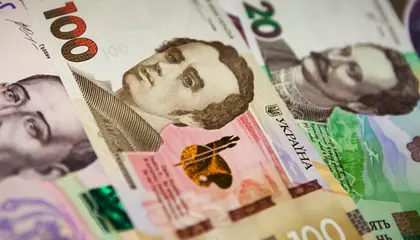Satisfying and unusual things sometimes happen in relation to the economy, especially when it concerns the reduction of easily recognizable changes such as in the price of fuel. Understandably people notice price increases in prices but seldom remember when they fall.
JOIN US ON TELEGRAM
Follow our coverage of the war on the @Kyivpost_official.
When events such as what has happened in Ukraine this year, people expect prices decreases across the board, expectations that rarely come true. When prices don’t fall, it gives rise to conspiracy theories that some unknown individuals are trying to make a fortune at a cost to ordinary Ukrainians.
Where do such expectations come from? Historically, prices in Ukraine jump when the hryvnia devalues, often because of poor rate management policies or the fixing of the exchange rate for political reasons. Rates were held at an artificial for level as long as possible but eventually a spike occurs. Many Ukrainians remember how the national currency first jumped from 5 to 8 to the dollar and the further rises that followed. Of course, when such a significant devaluation takes place it is accompanied by strong inflationary pressure, which could not help but happen in an economy that is linked so heavily to the dollar economy, where people often attach prices to dollar values and the cost of imports.
Thus, people think that when the hryvnia exchange rate falls prices rise, and then when the exchange rate strengthens, prices should decrease; sadly, this is an illusion.

NATO, Ukraine to Meet Tuesday Over Russian Missile Strike
Firstly, price reduction or deflation is actually an abnormal process. The upward movement of prices is a natural feature of the economy. The objective of central banks should be to allow moderate changes in price. Currently, high inflation is not an exclusively Ukrainian problem, there is global uncontrolled growth in price. In 2022, the USA, the UK and most European countries experienced inflation higher than that observed in the previous 40 years. This problem has not yet been resolved. Of course, it also affects Ukraine ase imports entail significant dollar inflation.
Thus, we get to the second issue. There are always pressures that both increase and decrease prices. Think of the economy as a pool into which water flows through one pipe and out through the other. The same thing is with inflation. There are factors that result in lower prices and those that cause higher prices. As a result, inflation can be considered as the level of water in the pool. We all see the water coming through a small pipe, these are the factors that work against increasing prices. They do not notice that water coming through the much larger pipe, which represents inflation from the USA, until it floods the pool. The slight strengthening of the hryvnia on the cash market, around 2-3%, is insignificant in comparison with external inflationary pressures.
Therefore, if there is a significant devaluation, the pipe is huge and thus plays a decisive role. However, with a moderate change in the exchange rate there should be only minor changes, especially as many goods are imported at the exchange rate set in the interbank market. Such minor fluctuations in the cash market do not affect it at all. So, while lower gasoline prices have a positive effect of on inflation and may reduce inflationary expectations but cannot reduce inflationary pressure.
As a result, inflation in 2023 is expected to reach a relatively high level of around 20%, which is actually a decrease on the 26% experienced in Ukraine in 2022. Even those figures could be viewed positively in the current circumstances because of the pressures caused by the war and external inflation. We should understand that in the countries of Eastern Europe, even without effect on prices from the war, inflation in 2022 was very close to Ukrainian figures.
You can also highlight the text and press Ctrl + Enter






